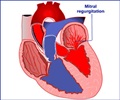The World Sight Day 2017 is being celebrated on the 12th October with the rolling theme ‘Universal Health Care’ and the call to action ‘Make Vision Count’.
Highlights:
- The World Sight Day 2017 is being celebrated on the 12th October with the rolling theme ‘Universal Health Care’ and the call to action ‘Make Vision Count’.
- Most cases of visual impairment can be prevented
- The WHO Global Action Plan 2014-19 aims to reduce the number of avoidable visual impairment cases by 25% by 2019 from the number of cases in 2010, and provide adequate rehabilitation to those with unavoidable visual impairment, so that they can achieve their full potential.
- Around 80% cases of blindness are preventable
- Around 90% of visually impaired individuals live in the developing countries
- Around 289 million people all over the world have some form of visual impairment; around 39 million people are blind and 246 million suffer from moderate-to-severe visual impairment
- Most blind individuals are over the age of 50 years
Common causes of visual impairment are as follows:
- Uncorrected refractive errors are the most common causes of visual impairment. In fact, the urban areas are almost seeing an epidemic of short-sightedness among children. Refractive errors need early diagnosis through a simple eye check and correction of vision with spectacles. Unfortunately, the cost of the spectacles may be prohibitive to some poor sections of the society
- The increased aging population reiterates the importance of addressing vision problems in the elderly. Older individuals usually suffer from conditions like cataract and age-related macular degeneration. Cataract operations, which have become much simpler nowadays, should be within the reach of those who need it.
- Lifestyle diseases like diabetes and hypertension, which are more common nowadays, also affect the eyes. High blood pressure and uncontrolled diabetes can cause retinopathy, which results in irreversible blindness. Early diagnosis and control of these conditions can prevent eye complications. This emphasizes the need to check the general health of the population along with the eyes to maintain good vision.
- Vitamin A deficiency causes night blindness especially in children, and if still untreated, could first lead to night blindness, and later complete blindness. Infections like trachoma and onchocerciasis also cause blindness.
The WHO Global Action Plan 2014-19 endorsed by governments all over the world advocates universal eye health by the year 2019. It aims to reduce the number of avoidable visual impairment cases by 25% by 2019 from the number of cases in 2010, and provide adequate rehabilitation to those with unavoidable visual impairment, so that they can achieve their full potential.
It is necessary for governments to address the issue of visual impairment seriously. Governments should have adequate data of the existing problem. They should invest in research and training of personnel who could deal with eye problems at the grass root level, and provide free checks and treatment to those who cannot afford to pay. The cost of spectacles should also be subsidized for those who cannot afford them. After all, saving the vision of individuals can provide much larger returns for the country in terms of reducing the burden of disability.
What can each of us do this World Sight Day? First of all, it is important to go for an eye check and a general health check, especially if you haven’t had one for a long time. Secondly, it is important to increase awareness about regular eye check among your near and dear ones especially if they suffer from conditions like diabetes, or are at extremes of age. Children usually do not realize if they are suffering from eye problems and therefore need a regular check. Poor sight adds to the disabilities of old age, and should be treated whenever possible.
With the festive season closing in, it is important to protect our eyes from fireworks by maintaining adequate distance from lit fireworks and wearing glasses if possible. Beside this, reading in adequate light and taking frequent breaks from screens will also help to maintain good eye health and vision.
Reference:
- World Sight Day 2017 - (https://www.iapb.org/)
- Universal Eye Health - (http://www.who.int/blindness/AP2014_19_English.pdf)
Source-Medindia



![Pulmonary Arterial Hypertension [PAH] - Symptoms & Signs - Causes - Diagnosis - Treatment Pulmonary Arterial Hypertension [PAH] - Symptoms & Signs - Causes - Diagnosis - Treatment](https://images.medindia.net/patientinfo/120_100/pulmonary-arterial-hypertension-pah.jpg)






